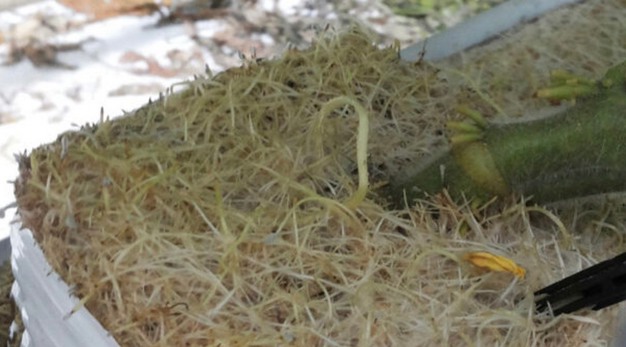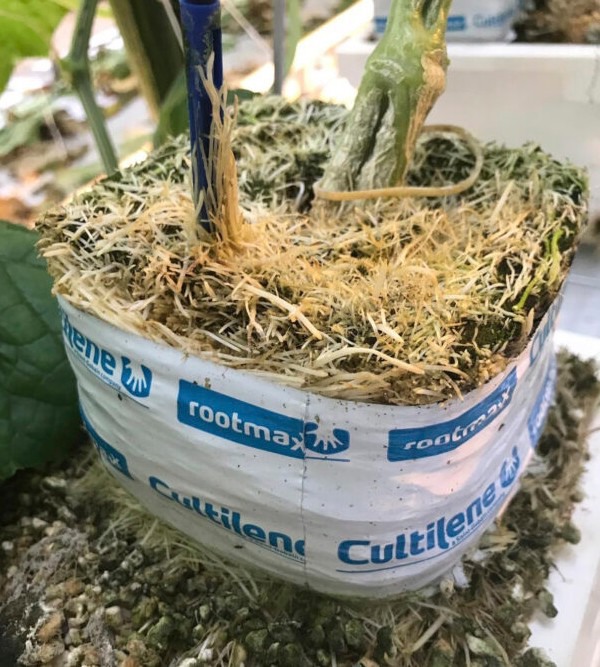A 3.8 ha Belgian tomato grower was confronted with an outbreak of 'Crazy Roots,' an infection characterized by excessive root growth. The first symptoms became already apparent early in the season, and the infection reached its peak in just five months, with 75% of the plants found to be infected. This resulted in a product loss of 6 kg/m².

Excessive rooth growth
"Crazy roots is caused by the bacterium Agrobacterium rhizogenes and has a wide range of host plants, examples are tomato, egg plant and cucumber", shares Ivan Casteels from Roam Technology. "Agrobacterium rhizogenes is able to transfer a part of its DNA into the plant cell. The plant cell will express the genes present on this piece of DNA, leading to the production and secretion of opines that can be used as a food source by the bacterium. Besides that, the hormone balance becomes disrupted, making the plant cells more sensitive for auxins causing the cell to divide uncontrollably leading to excessive root growth."
Crazy roots can be symptoms of the growth of many fine roots around the cultivation blocks and around the drippers, resulting in overgrown slabs that become impermeable and dry out. This leads to more vegetative plant growth, a thickened stem, problems with fruit set and formation, and a higher risk of secondary infection.

Water samples
As a first step, water samples were taken and analysed for the presence of agrobacteria by Roam Technology. "The approach was to obtain a clear idea of the seriousness of the situation and pollution in the water system," says Ivan. "Based on those results, a crop rotation protocol was introduced. Everything had to be thoroughly cleaned and disinfected."
The grower indicated that the presence of Crazy Roots not only leads to a production loss but is also time-consuming, for example, the substrate mats must be cut open manually.
The pipes of the irrigation system were filled for 12 hours with water containing the advised concentration Huwa-San TR-50, a registered biocide.
Furthermore, the silos were disinfected with Huwa-San TR-50 as well. Just before the new cultivation started, the grower filled the substrate mats with water containing the correct dosage of Huwa-San TR-50. Once the new cultivation season started, a specific dosage of Huwa-San TR-50 was maintained in the daily supply to attain a long contact time. Towards the greenhouse, another injection pump was installed to keep the concentration of Huwa-San TR-50 at the desired level in the irrigation system towards the plants.
The results
"The tailored advice and the Huwa-San TR-50 reduced the infection rate from 75% to just five plants showing symptoms. Not only did this increase the net yield, it also proved to be a very time-saving tool", says Ivan. "It not only improved the plant health but also resulted in an improved production: 75% infection rate was reduced to only 5 plants on 3,8 ha!"
For more information: Roam Technology NV
Roam Technology NV
Geleenlaan 24
3600 Genk
Tel.: +32 89 44 00 42
Email: info@roamtechnology.com
www.roamtechnology.com
Huwa-San TR-50 is a registered biocide. Use biocides safely. Before use, read the label and product information.
